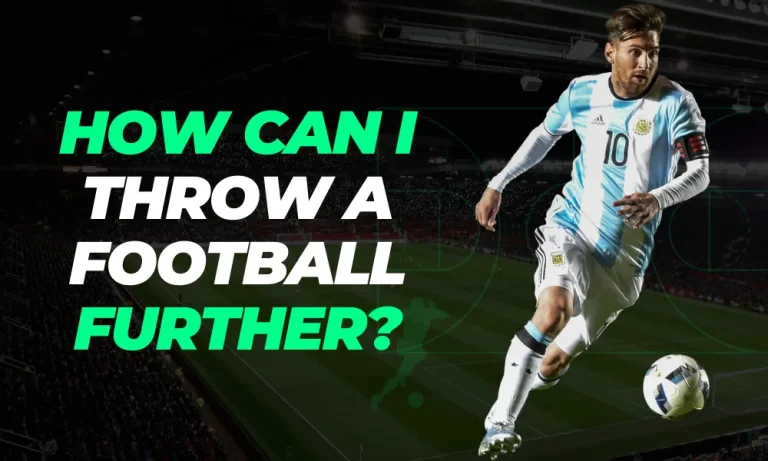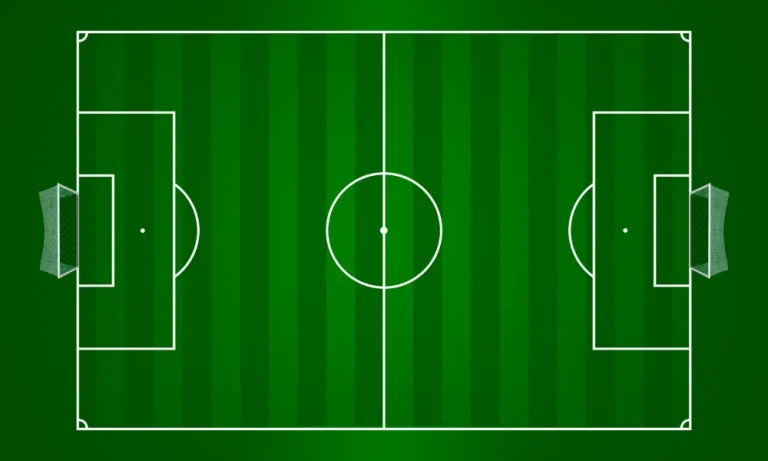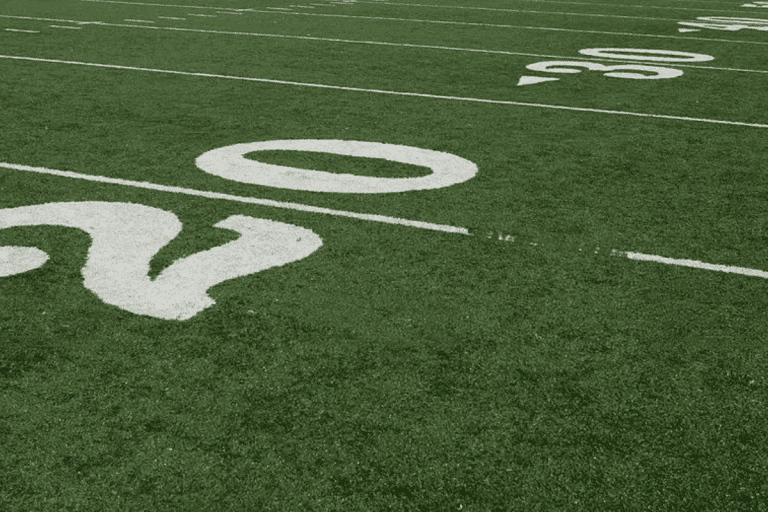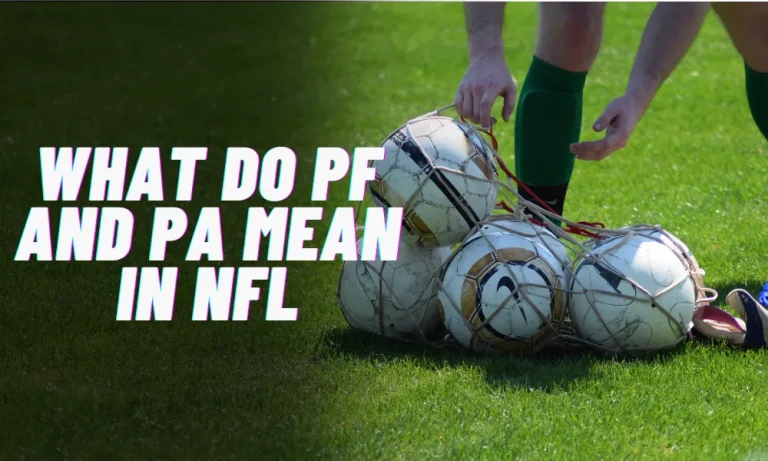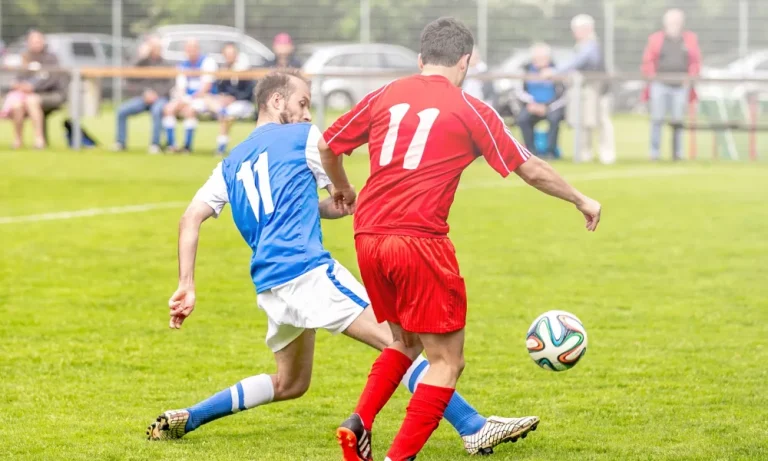How to Catch a Football Better?
Are you ready to take your football game to the next level? One essential skill that can greatly impact your performance on the field is the ability to catch a football better. Whether you’re a seasoned player or just starting out, mastering the art of catching can make a significant difference in your overall game.
Understanding the Basics of Catching

Catching in football refers to the skill of receiving and securing the football with your hands, preventing it from hitting the ground. It is a fundamental technique used by players in various positions, such as wide receivers, tight ends, and running backs. Catching involves using proper hand positioning, body control, and focus to successfully grab the ball while in motion.
Mastering the fundamentals of catching is crucial in football as it directly impacts the success of a player’s performance on the field. A solid foundation in catching allows players to contribute effectively to their team’s offense, creating scoring opportunities and sustaining drives. By mastering the basics, such as hand-eye coordination and proper technique, players can become reliable targets for their quarterbacks and make significant contributions to their team’s success.
A successful catch in football relies on several key components. First and foremost, hand positioning is critical. Players should position their hands in a way that provides a secure grip on the ball, typically forming a diamond shape with their fingers. Body positioning is equally important, as players must adjust their body to be in the optimal position to receive the ball.
Developing Hand-Eye Coordination
Hand-eye coordination plays a crucial role in catching a football. It refers to the ability to synchronize the movements of your hands with the visual input received from your eyes. When catching, your eyes track the ball’s trajectory, while your hands react accordingly to secure it. Good hand-eye coordination allows you to time your movements accurately, improving your chances of making successful catches.
There are various drills and exercises that can help improve hand-eye coordination for better catching skills. One effective exercise is the “tennis ball toss and catch.” Start by standing a short distance away from a partner and toss a tennis ball back and forth, focusing on tracking the ball with your eyes and catching it with your hands. Additionally, using a reaction ball can be beneficial. Throw the ball against a wall and try to catch it as it bounces off in unpredictable directions, challenging your hand-eye coordination.
Consistent practice is key to enhancing hand-eye coordination. Incorporating activities like juggling, playing catch with smaller objects like bean bags, or even practicing with a tennis racket can improve coordination. Additionally, engaging in sports that require hand-eye coordination, such as basketball or table tennis, can be beneficial. Regular practice allows your brain to develop stronger connections between your visual perception and motor skills, resulting in improved coordination when catching a football.
Proper Catching Technique
To execute the correct catching technique in football, follow these steps. First, establish a solid base by positioning your feet shoulder-width apart. Next, extend your arms out in front of you, forming a diamond shape with your fingers to create a secure target for the ball. As the ball approaches, bring your hands together, enveloping the ball in a firm grip. Finally, bring the ball into your body, securing it against your chest to prevent it from being dislodged.
Hand positioning
Proper hand positioning is crucial for a successful catch. Position your hands with your palms facing up, forming a diamond shape with your fingers. This technique provides a larger surface area to secure the ball and helps absorb the impact upon catching.
Body positioning
Maintaining the correct body positioning is essential for a successful catch. Position yourself in a way that allows you to adjust your body to the ball’s trajectory. Keep your body relaxed, with your shoulders square to the line of the throw. This position enables you to adjust your body and make necessary movements to catch the ball effectively.
Focus and concentration
Maintaining focus and concentration throughout the catch is vital. Keep your eyes on the ball from the moment it leaves the quarterback’s hand until it is secured. Avoid distractions and track the ball’s movement accurately. Concentrating on the ball allows you to react quickly and make precise adjustments during the catch.
Common mistakes to avoid when catching
When catching, it’s important to avoid common mistakes that can hinder your success. Some common errors include trapping the ball against your body instead of catching it with your hands, allowing the ball to hit your body, or failing to maintain eye contact with the ball. By being aware of these mistakes and actively working to correct them, you can improve your catching technique and increase your chances of making successful catches.
Enhancing Catching Skills Through Drills
Incorporating drills into your training sessions is crucial for enhancing your catching skills in football. Drills help improve your hand-eye coordination, reaction time, and overall technique. By practicing specific drills, you can isolate and focus on different aspects of catching, allowing for targeted skill development. Regular drills also help build muscle memory, enabling you to perform catching techniques instinctively during game situations.
There are various catching drills that cater to different skill levels. Beginners can start with simple drills like the “partner toss and catch,” where you stand a short distance away from a partner and practice catching throws. Intermediate players can progress to more challenging drills like the “one-handed catch drill,” which focuses on developing hand strength and coordination. Advanced players can engage in complex drills like the “deflection drill,” where they practice catching deflected balls, simulating game scenarios.
Improving Reaction Time
Reaction time plays a crucial role in successfully catching a football. It refers to the time it takes for a player to perceive the ball’s movement and initiate a response. A faster reaction time allows you to anticipate the ball’s trajectory, adjust your body position, and make timely movements to secure the catch. By improving your reaction time, you increase your chances of making successful catches, especially when facing fast-paced and unpredictable game situations.
There are several techniques you can employ to improve your reaction time. One effective technique is practicing visual focus exercises, such as tracking a moving object or following a partner’s hand movements. Another technique is incorporating agility drills into your training routine. These drills involve quick changes in direction or sudden movements, forcing you to react promptly. Additionally, incorporating exercises that enhance hand-eye coordination, such as juggling or playing catch with smaller objects, can help sharpen your reaction time.
Engaging in reaction-based drills is an excellent way to develop quick reflexes. One such drill is the “reaction ball drill,” where you throw a small, unpredictable bouncing ball against a wall and catch it as it rebounds in random directions. This drill challenges your reaction time and hand-eye coordination. Another effective drill is the “cone drill,” where cones are arranged in a pattern, and you react to specific cues to navigate through them quickly. These drills simulate game scenarios and help train your body to react swiftly, ultimately improving your catching ability.
Overcoming Challenges and Increasing Consistency
Dealing with distractions and pressure during catches is essential for maintaining consistency. One way to overcome distractions is by developing a focused mindset. This involves blocking out external noise, visualizing successful catches, and maintaining a positive attitude. Additionally, practicing mindfulness techniques, such as deep breathing or visualization exercises, can help calm the mind and improve concentration. By staying focused amidst distractions and pressure, you can increase your chances of making consistent catches.
Maintaining focus and concentration is crucial for consistent catching. One strategy is to establish pre-catch routines, which involve mentally preparing yourself before each catch. This routine could include visualizing the ball’s trajectory, checking your body positioning, and reaffirming your catching technique. Another strategy is to break down the catch into smaller steps, focusing on each component individually. By giving your full attention to each step, you can maintain focus and ensure consistent catches.
To increase catching consistency, it is important to practice with a purpose. Focus on repetition and precision during drills, ensuring that you are executing proper catching techniques consistently. Another tip is to challenge yourself with varying catch scenarios, such as practicing in different weather conditions or adjusting to different ball speeds. This helps develop adaptability and prepares you for unpredictable game situations.
Lastly, maintaining a consistent training schedule and seeking feedback from coaches or experienced players can provide valuable insights and further enhance your catching consistency.
Mental Preparation for Catching
Catching a football is not just about physical skills; it also involves a strong psychological aspect. Mental preparation is key to performing at my best. It involves understanding the importance of focus, confidence, and resilience during catches. By recognizing the psychological factors at play, I can enhance my overall performance and increase the likelihood of successful catches.
Visualization and positive self-talk are powerful techniques for mental preparation. By visualizing successful catches in my mind, I can create a mental blueprint of what I want to achieve. This helps build confidence and primes my mind for success. Positive self-talk involves replacing negative thoughts with positive and encouraging statements. By affirming my abilities and focusing on my strengths, I can boost my confidence and maintain a positive mindset, even in challenging situations.
Building confidence and mental resilience is crucial for consistent catching. Confidence can be developed by setting achievable goals, acknowledging past successes, and focusing on continuous improvement. It is important to remember that confidence comes from consistent practice and belief in my abilities. Mental resilience, on the other hand, involves bouncing back from mistakes or failures.
The Importance of Physical Fitness
Physical fitness plays a crucial role in my catching abilities. Being physically fit enhances my overall performance and increases my chances of making successful catches. It improves my speed, agility, and coordination, allowing me to react quickly and move efficiently on the field.
Additionally, physical fitness helps me maintain peak endurance, enabling me to stay focused and perform consistently throughout the game. By prioritizing physical fitness, I can maximize my catching potential and elevate my overall performance.
Improving overall athleticism is essential for enhancing my catching skills. Incorporating exercises that focus on strength, speed, and agility can help me become a more well-rounded athlete. Strength training exercises, such as squats, lunges, and bench presses, help build muscle power and stability. Speed training drills, like sprinting or ladder drills, improve my acceleration and quickness.
Agility training exercises, such as cone drills or ladder agility drills, enhance my ability to change direction rapidly. By incorporating a variety of exercises and training methods, I can improve my overall athleticism and become a more effective catcher.
A balanced approach to physical fitness is crucial for better catching. It’s important to focus on developing strength, speed, and agility in tandem. A strong foundation of strength provides the power and stability needed for explosive movements during catches. Speed helps me cover more ground quickly and react swiftly to changing game situations.
Agility enables me to maneuver through tight spaces and make precise movements. By training all three aspects in a balanced manner, I can optimize my catching abilities and perform at my best on the field.
Perfecting the Catch in Different Game Situations
Perfecting the catch requires adapting my techniques to different game situations. It’s crucial to adjust my approach based on factors like speed, distance, and positioning. For deep passes, I need to focus on tracking the ball and using proper hand positioning to secure the catch. When catching short passes, I should concentrate on quickly securing the ball and transitioning smoothly into a running position.
By recognizing the specific demands of each game situation, I can adapt my catching techniques accordingly and increase my chances of success.
Catching while running adds an extra layer of complexity to the skill. To excel in this scenario, I must maintain good body control, hand-eye coordination, and concentration.
I need to anticipate the trajectory of the ball, adjust my speed accordingly, and extend my arms to catch it cleanly. Practicing running routes and working on hand-eye coordination drills can help me become more comfortable and proficient at catching while on the move.
Catching in traffic or under pressure requires mental toughness and quick decision-making. In these situations, there may be defenders or other players in close proximity, making it challenging to secure the catch.
To succeed, I must maintain focus, use my body to shield the ball from defenders and react quickly to any changes in the environment. Building mental resilience and practicing catching drills with simulated pressure situations can help me improve my ability to catch in traffic or under pressure.
Equipment and Tools for Better Catching
Having the right equipment is crucial for maximizing catching performance. Wearing appropriate gear not only ensures safety but also enhances my ability to secure catches. A well-fitted helmet provides protection and allows for clear vision on the field.
Shoulder pads help absorb impact and provide stability when making catches in traffic. Wearing proper cleats ensures good traction, allowing me to maintain balance and quick movements.
By investing in and using the right gear, I can perform with confidence and reduce the risk of injury while catching.
Choosing the right football gloves can significantly improve my catching abilities. Look for gloves with a tacky palm material that enhances grip, allowing me to make secure catches. Reinforced stitching and durable materials ensure longevity and prevent wear and tear. Gloves with a snug fit and adjustable wrist straps provide a comfortable and secure feel.
Additionally, gloves with ventilation features help keep my hands cool and dry during intense gameplay. By selecting gloves with these features, I can enhance my grip and maintain control when catching the ball.
Aside from gloves, there are other tools that can aid in improving catching performance. One such tool is a catching net or rebounder, which allows me to practice catching drills on my own. It helps improve hand-eye coordination and reaction time.
Another helpful tool is a JUGS machine, which shoots balls at different speeds and angles, simulating game situations. Regular practice with these tools can help me refine my catching skills, making me more confident and consistent on the field.
Common Mistakes and How to Correct Them
To become a better catcher, it’s essential to identify and correct common mistakes. One common error is taking my eyes off the ball too early, which leads to dropped catches. To fix this, I need to maintain focus on the ball until it is securely in my hands. Another mistake is improper hand placement, resulting in the ball bouncing off my hands. I can correct this by practicing proper hand positioning and forming a “diamond” shape with my fingers when catching.
Dropped catches and inconsistent performance can be frustrating. One possible reason for this is a lack of concentration. To address this, I need to practice mindfulness and focus on the task at hand. Another factor could be a lack of hand strength and coordination. Strengthening exercises such as grip strengtheners and hand squeeze balls can help improve my hand muscles and coordination, reducing the chances of dropping catches and improving overall performance.
FAQs – How to Catch a Football Better
What is the proper hand placement for catching a football?
Form a “diamond” shape with your fingers, thumbs touching, and keep your hands relaxed but firm to secure the ball.
How can I improve my hand-eye coordination for better catching?
Practice drills that involve tracking and catching moving objects, such as using a tennis ball or participating in hand-eye coordination exercises.
What can I do to reduce drops when catching a football?
Focus on keeping your eyes on the ball until it is securely in your hands, and work on hand strength exercises to improve grip and control.
How should I position my body when preparing to catch a football?
Keep your body balanced, feet shoulder-width apart, knees slightly bent, and maintain a relaxed and ready stance to react quickly to the ball.
How can I catch high passes more effectively?
Practice jumping drills to improve your vertical leap, and extend your arms fully while jumping to reach and secure high throws.
Conclusion
Improving your ability to catch a football better is a game-changer in the world of football. By understanding the basics, developing hand-eye coordination, perfecting the technique, and enhancing your reaction time, you can significantly increase your catching skills. Remember to stay focused, practice regularly, and maintain a positive mindset. With dedication and perseverance, you’ll notice a remarkable improvement in your catching abilities. So, don’t wait any longer—grab that football, hit the field, and start honing your catching skills. Get ready to take your game to new heights and become a standout player on the field!

